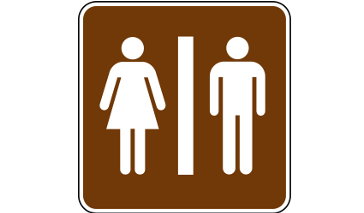Urinary incontinence is the loss of bladder control and often leads to involuntary urine leakage. Symptoms of incontinence can range from an overactive bladder or loss of bladder control when sneezing or lifting a heavy object to the complete inability to control urination. Urinary incontinence is not a disease; rather, it is a symptom of other underlying health problems. Determining what is causing incontinence is essential for effective treatment, particularly because there are different types and causes.
What are the Types and Causes of Urinary Incontinence?
There are several different types of urinary incontinence and each has its own causes. For example:
- Temporary incontinence, as its name implies, is an acute condition which typically occurs as a result of taking certain medications, such as prescription drugs for blood pressure or sleeping aids. It may also be due to other general health conditions like constipation or urinary tract infections. Temporary incontinence can be cured by changing medications, reducing dosage or addressing the underlying medical condition causing the problem.
- Stress incontinence occurs when various physical activities, including sneezing, lifting heavy objects or laughing place pressure on the bladder. This type of incontinence is the most common, particularly among those over the age of 50, and often occurs when the muscles that control the bladder are weakened.
- Urge incontinence is accompanied by a strong urge to urinate, usually as a consequence of an overactive bladder. The need to urinate comes on suddenly and the individual is unable to hold their urine until reaching the bathroom. Lifestyle choices and health conditions may contribute to the problem. Excessive caffeine, alcohol consumption, type 1 or 2 diabetes, tumors or stones in the bladder and neurological injury or damage caused by disease (e.g., multiple sclerosis) or injury (e.g., stroke) can all play a factor.
- Overflow incontinence results when urine leaks from a bladder that is full. Various medical conditions, such as an enlarged prostate or spinal cord injury, can make it difficult for an individual to completely empty the bladder.
- Functional incontinence is common in elderly patients that have normal bladder control. It occurs when the individual is unable, for various physical reasons, to get to the bathroom when the need to urinate arises.
What are the Risk Factors for Urinary Incontinence?
Although the chance of having incontinence generally increases with age, there are several other risk factors which may increase the likelihood that an individual will develop this condition. Who is most vulnerable to urologic conditions such as incontinence? The risk factors for incontinence and related issues include:
- Multiple pregnancies or having a hysterectomy (women)
- Prostate enlargement (benign prostatic hyperplasia) or prostate surgery (men)
- Being overweight or obese
- Having poor mobility
- Waking at night to urinate (nocturia)
- Dementia
Gender, however, is a risk factor for the type of urinary incontinence that will develop. Women are more likely to develop stress incontinence, while men are more likely to develop overflow incontinence.
What are the Symptoms of Urinary Incontinence?
Despite there being different types of urinary incontinence, the symptoms associated with each are similar. They include:
- Involuntary leaking of urine from the bladder
- A strong urge to urinate
- Increased urination at night
- Difficulty initiating urination
- Difficulty emptying the bladder
- Decreased urinary flow, leading to dribbling from the urethra
How is Urinary Incontinence Diagnosed?
The diagnosis of urinary incontinence can be challenging because the underlying cause of the condition may be difficult to identify. The doctor will need to complete a full health history and perform a physical exam to see if there are any problems with the patient's urinary or urological systems. In addition, the doctor will perform urine and blood tests to determine if the kidneys are working properly and to see if an infection is present. A stress test may also be preformed. If so, the doctor will ask the patient to bear down with a full bladder so that the loss of urine can be visualized.
If the doctor is unable to diagnose the cause of incontinence, additional testing may be needed. These include:
- Ultrasound. An ultrasound of the bladder and urinary system can be used to evaluate urinary function, muscle contraction and the amount of urine left in the bladder following voiding (post-void urination).
- Cytoscopy. A cytoscope is a thin tube with a small camera on the end that can be inserted into the urethra and bladder to see if any tumors or substances are narrowing or blocking the structures.
- Contrast x-rays. Contrast x-rays use dyes that are injected into the vein or introduced into the bladder to visualize the flow of urine out of the body. These x-rays can provide information about how much urine is in the bladder as well as whether tumors or other structures are blocking the flow of urine.
- Urodynamic tests. Urodynamic tests measure various aspects of bladder function, such as capacity, pressure, urine flow speed and coordination of the muscles that control the bladder.
How is Urinary Incontinence Treated?
Treatment for urinary incontinence will depend on the underlying cause of the condition. For example, bladder slings are used to treat incontinence in women. Medication, behavioral training and surgery are three ways to remedy or reduce symptoms. Often, they are used in combination with one another.
References
Age Page: Urinary incontinence. (2013). National Institute on Aging
Riley, J. (2012). Urinary incontinence. Conditions & Procedures, 1-3.


